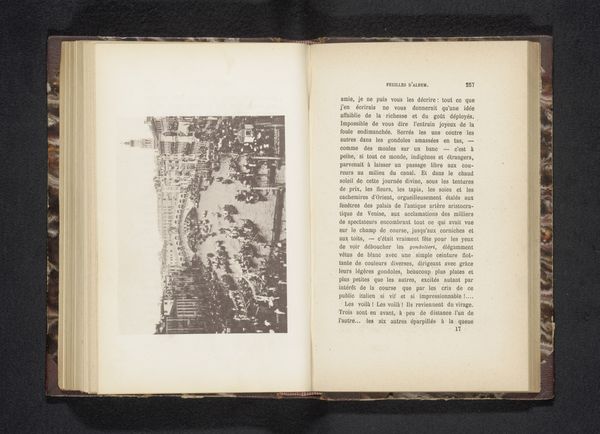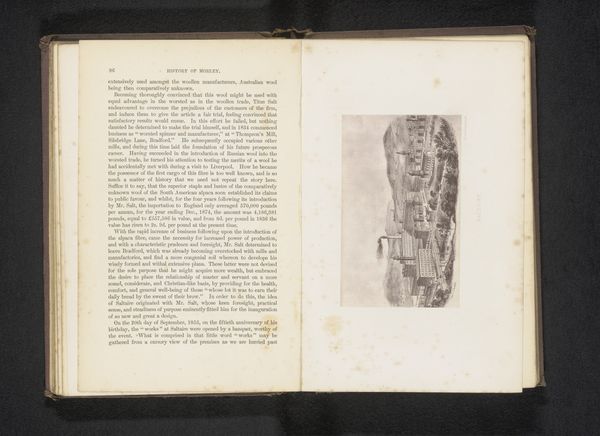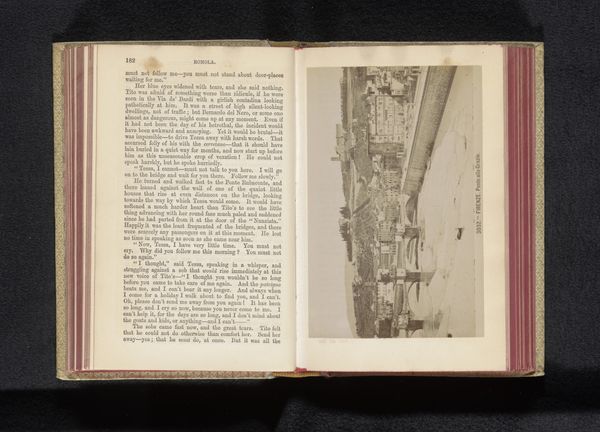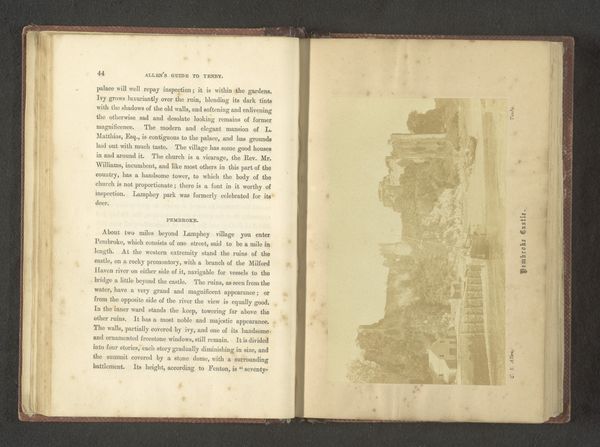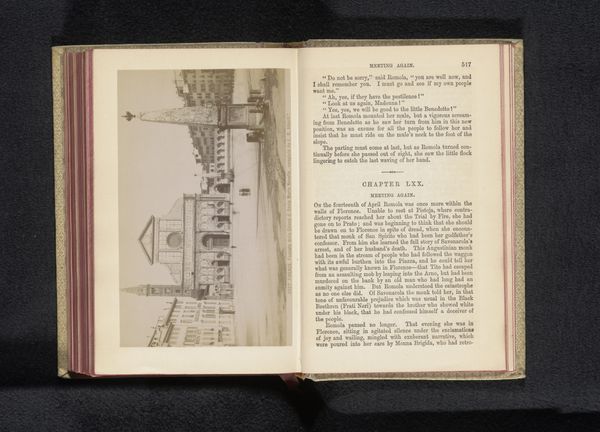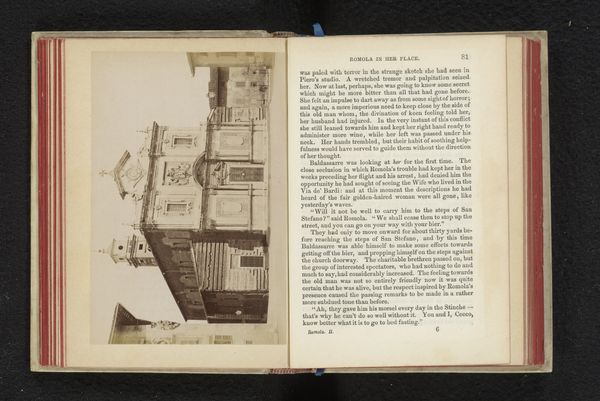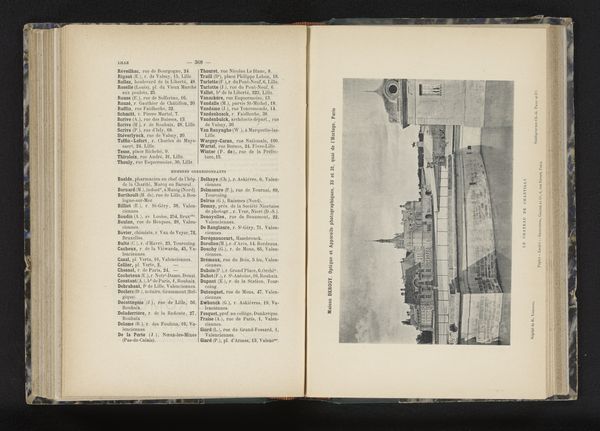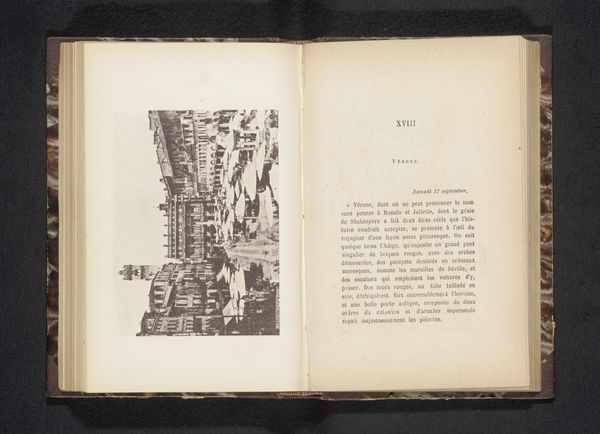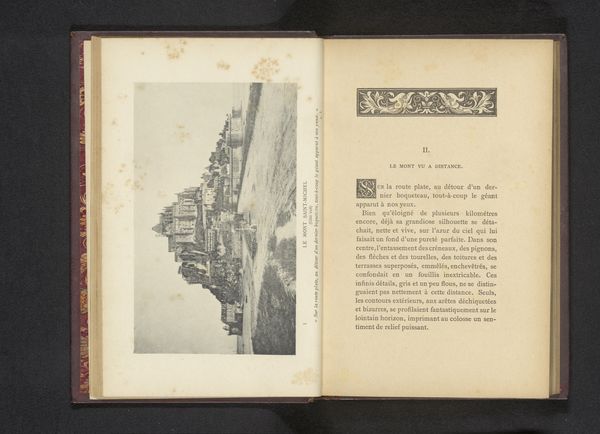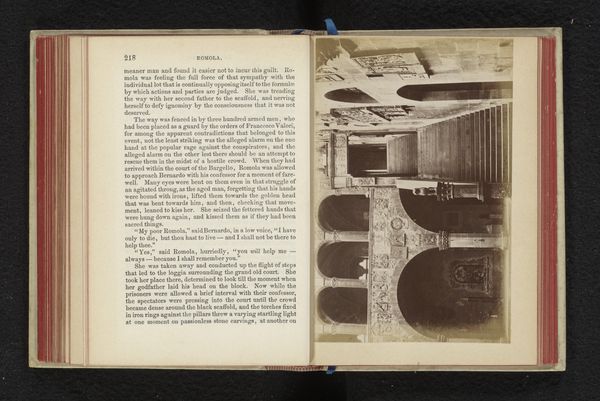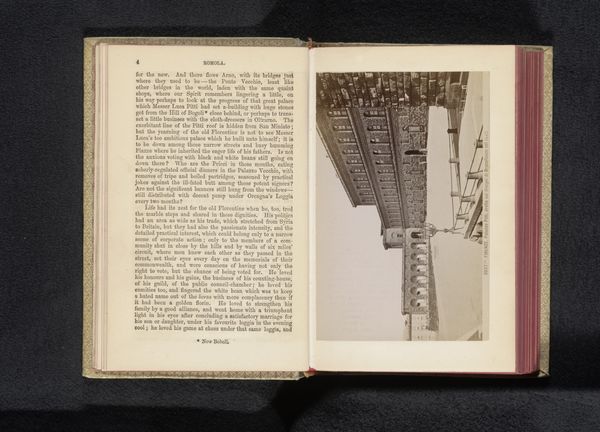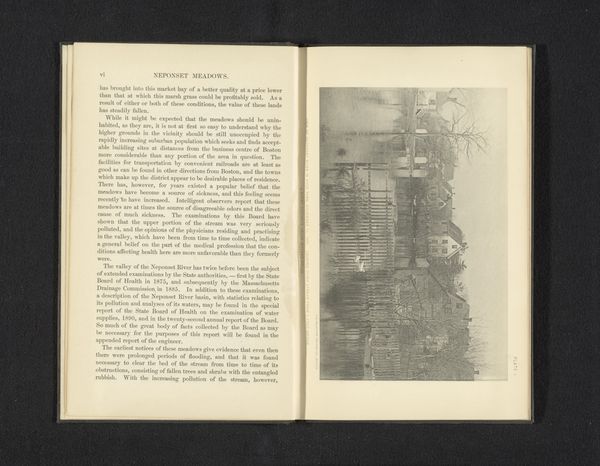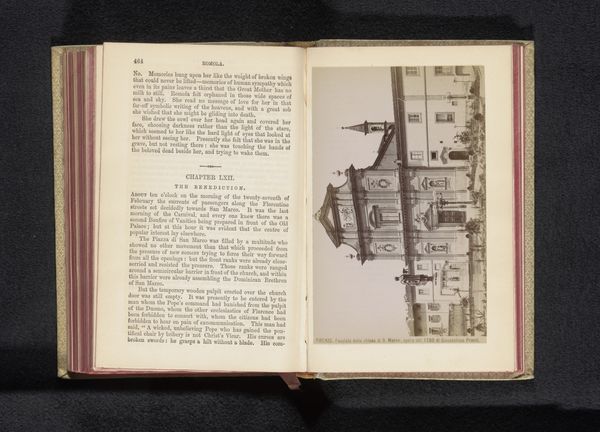
Fotoreproductie van een schilderij van de executie van Girolamo Savonarola in Florence before 1863
0:00
0:00
print, etching, photography
# print
#
etching
#
landscape
#
11_renaissance
#
photography
#
history-painting
Dimensions: height 93 mm, width 122 mm
Copyright: Rijks Museum: Open Domain
Curator: Well, this piece immediately conjures a somber mood, almost suffocating in its detail. Editor: Indeed. We’re looking at a photomechanical print of a painting depicting the execution of Girolamo Savonarola in Florence. Attributed to Giacomo Brogi, it's a photograph of an etching, created sometime before 1863. It’s fascinating to see photography capturing other forms of art in this way, especially when representing such a pivotal historical moment. Curator: Pivotal and profoundly tragic. Savonarola, the fiery Dominican friar, undone. The scene, dense with figures in what feels like a bird's eye view, evokes a palpable sense of dread. All those faces…judging. The tower, too, looks almost oppressive here, bearing down. What symbols strike you? Editor: The most potent symbol, undeniably, is the stark contrast between the earthly power represented by the architecture—the Palazzo Vecchio, the assertive tower—and the helplessness of Savonarola at the center of the scene, consumed by flames. The fire, in this context, isn't just physical destruction; it represents the obliteration of his ideals and influence, a stark reminder of the fragility of dissent. Also the gallows, fashioned to look less like the cross and more a tool of torture. Curator: Exactly. The deliberate distortion— or perhaps better yet, the weaponization—of symbols. He’s a mirror reflecting all their own unholiness in a way that drove the elites quite mad. So mad that they had to completely erase him. It all plays on the idea of visual manipulation, something that both he and his enemies surely understood quite well. There are no easy visual outs, which makes it feel even heavier. Editor: It becomes a cultural palimpsest then—layered with political, religious, and psychological significance. A reproduction of a historical interpretation captured and reproduced in another medium adds further complexity to its meaning, allowing this moment of political and spiritual clash to be carried forward across centuries. Curator: It really prompts a necessary, albeit deeply painful, meditation on the nature of power. Seeing history captured and re-interpreted in this form feels significant... almost a duty. Editor: I concur. It underscores how these events and their symbolic weight continue to shape our cultural consciousness, demanding we reflect on them.
Comments
No comments
Be the first to comment and join the conversation on the ultimate creative platform.
